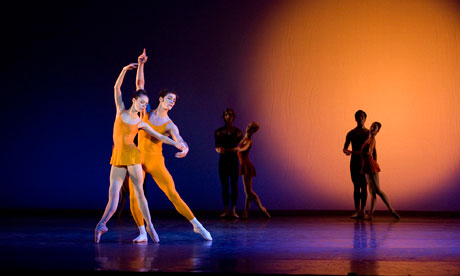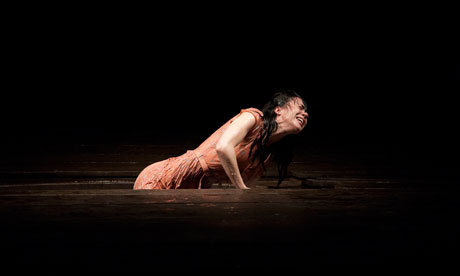TRAVEL REVIEW: UTRECHT

It is not every day that you get to fall in love. Happily Utrecht is one of those beautiful European cities whose charms are difficult to resist. It is suitably distant from the dubious seediness of Amsterdam to be romantic, despite its location less than half an hour by train from the capital. Marred only by its guttural name, a little harsh for English ears, this delightful city shines particularly in spring when blossom falls lazily into the winding canals and tulips bloom from every garden.
Rather stereotypically, the most noticeable feature of any Dutch city is its bicycles. Strolling down the city streets you see the bikes locked to any and every available fixed post or railing, every bridge festooned with wheels. The Dutch passion for cycling is rampant, and Utrecht train station has implemented numerous storage options, including a huge underground bike park cavern where, in one of the more bizarre episodes of my trip, I discussed the philosophy of Plato and Aristotle with the friendly assistant.
The people, of course, are one of the most charming assets Utrecht possesses. Somewhere between sprawling Amsterdam and compact Oxford in size, the city was aptly described by the bike park assistant as a “big village”. Utrecht’s residents do have a kind of village mentality, a friendly curiosity towards visitors, marred only slightly by the characteristic Dutch directness which may unsettle the sensitive English. People are happy to help the lost and confused, and all speak English so well and so willingly, it is easy to find yourself feeling at home.
The other notable form of transport in Utrecht is more ornamental. Utrecht is a city, like many in the Netherlands, of water. Two canals, the Oudegracht and the Nieuwegracht, run through the city centre, and the old town is enclosed by the Singel, a waterway running like a belt round the outside. I had a particularly bizarre moment when basking by the Oudegracht, beside a charming open-air café, I was suddenly transported to Venice with a gondolier emerging from beneath an old bridge into perfect sunlight. The canals are well populated by all manner of waterborne transport, from narrow boats to canoes for hire. Uniquely Utrecht has pathways which run along the wharves, actually level with the water and the wharf storage areas where boats would have been unloaded, and goods taken straight up into the houses above. These charming little caves in the canal-side have been turned into various open air cafes, restaurants and shops, while the unused parts are filled with deckchairs and picnickers in the sunshine.
A key feature of Dutch culture is this focus on commerce. The Dutch love to sell and buy, and Utrecht has a huge number of shops and cafes, far out of proportion, from an English point of view, for its population size. But strangely, this capitalistic characteristic does not detract from Utrecht’s appeal. The capitalism of the Netherlands is a kind of benevolent one. The Dutch love to buy beautiful things, particularly for their homes, much more than the English. The city is populated with so many lovely shops selling gorgeous clothes, pottery, shoes, and so on, and for shopping this city cannot be faulted. The flower market is a good illustration of the peculiar Dutch attitude to business. The square behind Janskerk fills with flower and plant sellers on Saturday mornings, and the shoppers are quick to follow. There is an air of joy in the air, everyone convinced they have bought the best, most beautiful bunch. Buying is a way of getting beautiful things, with making money an added, but crucial benefit.
Utrecht is very well stocked with commercial facilities in comparison with many British cities. Charming cafes and restaurants are everywhere; some of the most notable are the lovely open air cafés on the Oudegracht, the delightful railway-side café a little further from the centre, and my particular favourite, Zizo’s, a worthy enterprise which employs disabled people as well as doing the best hot chocolate I have tasted in a country well known for “chocomelk”. The café also boasts a gift shop selling art by people with disabilities as well as handmade pottery and gifts. Definitely worth a visit.
Culturally Utrecht made me smile. I have been labelled a culture vulture before, and I can certainly say I would never run out of activities in this city. Museums range from the random Contemporary Aboriginal Art (the only one in Europe?) to the Religious Art Museum (probably of niche interest, although I found the Macedonian Icon exhibition fascinating) and the obscure mechanical musical instrument Museum Speeklok. This is also the home of Dick Bruna and the international children’s celebrity that is Miffy, so the city has its own museum for this too, and a statue of the creature by the canal.
Utrecht is very much seen as a cultural capital for the Netherlands, and boasts many fine theatres, cinemas, and music venues, as well as a packed arts festival program. I attended a wonderful concert in a converted church, some sublime Schumann, Mendelsohn and Brahms, and was told the city welcomes many internationally acclaimed musicians and that there is something to go to, concerts, plays, artsy events, every night. One which stood out for me is “Utrecht Dances”, one of the monthly Cultural Sunday special days of free workshops, music, theatre and dance in the city. All this cultural richness is soon to be enhanced with the exciting plans for 2013, the 300th anniversary of the Peace Treaty of Utrecht. This year will see many celebrations, including art and culture at fortresses, castles and the deserted air base of Soesterberg, as well as kicking off preparations for Utrecht’s bid to become 2018 Cultural Capital.
Architecturally Utrecht delights the eye, and for those with an artistic bent there is so much to appreciate. Climbing the 460-odd steps of the Dom Tower, constructed in 1382, is essential, laying out the beautiful houses and winding canals at your feet. And what a city it is to survey from the air! So many wonderful old houses line the canals, with modernity fringing the city in the form of distant high rises. The process of city planning has done very well to keep the historical beauty of Utrecht. Every street in the centre, the old town, is packed with lovely old houses, many of which now contain cafes, cinemas, theatres and shops of all flavours, in a well-balanced blend of the modern and the historic.
However, the wonderful architecture of the city is not confined to the old. Utrecht is well known for several modern buildings. This includes the famed Rietveld Schroder house, highlighting the “De Stijl” movement with its focus on red, blue, yellow, black and white colours and exploration of the relation between interior and exterior (such as the disappearing corner window), as well as the architecture at the Uithof university campus. I particularly liked a new building, completed in 2008, called Smarties which is student accommodation, a usage which fits well with the brightly coloured mosaic façade.
The university backs onto a most beautiful nature reserve. I went to explore the university on a hot afternoon, by bike, of course, and after appreciating the impressive buildings I was pleasantly surprised to see a huge expanse of green, rolling fields, cows and woods spreading out from the boundaries of the campus. This is Fort Rhijnnauwen nature reserve, a huge expanse of woods and waterways surrounding a 19th century fort. A little out of town but a lovely place to cycle, walk, drink tea in the various cafes, or just lie between the reeds on the peaceful banks, and incredibly popular with the outdoor-loving Dutch. The Vecht river north of the city, which runs between Utrecht and Amsterdam, is also meant to be beautiful, lined with magnificent country estates, although sadly this will have to wait for my return visit.
Something which I have touched on, but will finish on as a stereotypical, but fundamental Dutch characteristic, is the national love of the outdoors. The Dutch are fanatic cyclers, and their flat country is perfectly suited to all the national cycle networks which criss-cross it, but they also love simply being outside. They treat their open spaces like “beach parks” more than we do in this country. The fantastic weather of my visit saw the banks of the Singel and all the parks covered with sunbathers and picnickers, students pretending to be working, and many decidedly not working. This is the real charm of Utrecht. It is a beautiful city, historically, culturally, even commerciality, with so many opportunities to purchase lovely things, and its people make it a really lovely place to visit. If you visit one place in the Netherlands, I’d strongly advise you to make it this often overlooked city.


